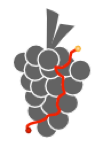Workshop on Reachability Problems
-
•PR’15 in Warsaw, Poland , LNCS proceedings, Springer Verlag
-
•RP'14 in Oxford, UK , LNCS proceedings, Springer Verlag
-
•RP'13 in Uppsala, Sweden, LNCS proceedings, Springer Verlag
-
•RP'12 in Bordeaux, France, LNCS proceedings, Volume 7550/2012, Springer Verlag
-
•RP'11 in Genova, Italy, LNCS proceedings, Volume 6945/2011, Springer Verlag
-
•RP'10 in Brno, Czech Republic, LNCS proceedings, Volume 6227/2010, Springer Verlag
-
•RP'09 in Palaiseau, France, LNCS proceedings, Volume 5797/2009, Springer Verlag
-
•RP'08 in Liverpool, UK, ENTCS proceedings, Volume 223, Elsevier
-
•RP'07 in Turku, Finland, TUCS General Publication Serie, Volume 45,
Turku Centre for Computer Science










